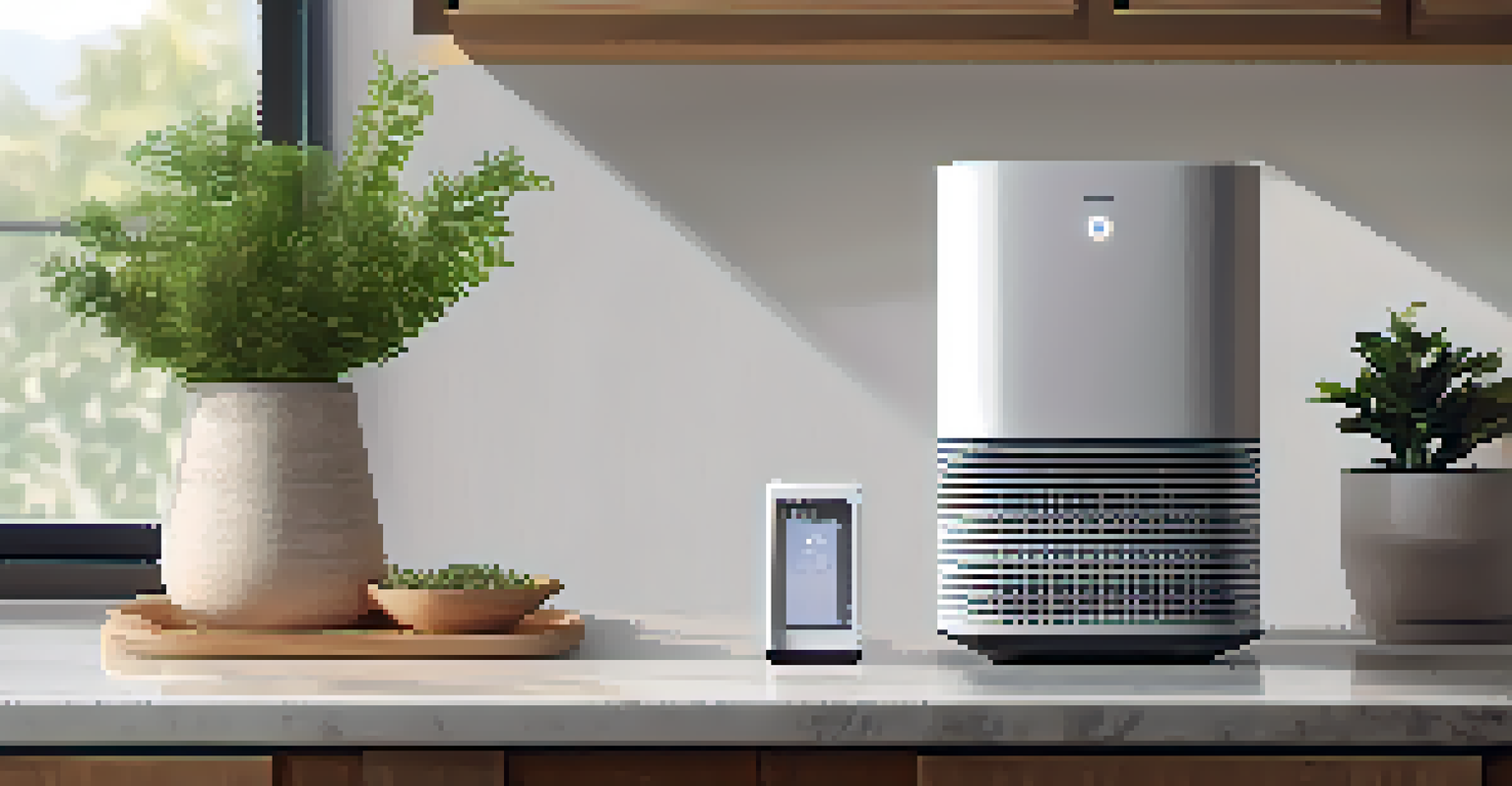Examining the Health Risks of Indoor Air Pollution

What is Indoor Air Pollution and Why It Matters
Indoor air pollution refers to the contamination of the air inside buildings, primarily caused by a variety of pollutants. These can include household cleaning products, mold, and even furniture materials that release harmful chemicals. It's crucial to understand that we spend a significant amount of time indoors, making the quality of this air a major factor in our overall health.
The air we breathe in our homes can be more polluted than outdoor air, and that’s a significant concern for our health.
Many people underestimate indoor air pollution, thinking outdoor air is the only concern. However, studies show that indoor air can often be more polluted than outdoor air, especially in poorly ventilated spaces. This makes it essential to be aware of the sources of pollution in our homes and workplaces.
The implications of ignoring indoor air quality can be severe, leading to respiratory issues, allergic reactions, and other chronic health problems. By gaining a better understanding of what causes indoor air pollution, we can take steps to mitigate its effects on our health.
Common Sources of Indoor Air Pollutants
Indoor air pollutants can come from a wide range of sources, both natural and man-made. Common culprits include pet dander, dust mites, and mold, which can thrive in damp environments. Additionally, household products, such as paints, cleaners, and pesticides, often release volatile organic compounds (VOCs) into the air.

Furnishings and building materials can also contribute to poor air quality. Items like carpets, upholstery, and even new appliances can release harmful chemicals long after they are installed. This is often referred to as 'off-gassing,' and it can lead to a buildup of toxins in our living spaces.
Indoor Air Quality Affects Health
Indoor air pollution can lead to serious health issues, including respiratory problems and chronic diseases.
Another significant source is tobacco smoke, which not only affects smokers but can also impact non-smokers through secondhand smoke. Understanding these sources is the first step in addressing indoor air quality and reducing health risks.
Health Risks Associated with Indoor Air Pollution
Indoor air pollution can have a profound impact on our health, and the effects can be both immediate and long-term. Short-term exposure can lead to symptoms like headaches, fatigue, and irritation of the eyes, nose, and throat. In contrast, chronic exposure may result in serious conditions such as asthma, lung cancer, and cardiovascular diseases.
Indoor air quality is not just about comfort; it’s about health, productivity, and well-being.
Vulnerable populations, such as children, the elderly, and those with pre-existing health conditions, are particularly at risk. For instance, children are more susceptible to respiratory problems due to their developing lungs and higher breathing rates. This makes it crucial to ensure clean air in environments where they spend time, like schools and homes.
Moreover, mental health can also be affected by poor indoor air quality. Studies suggest a link between air pollution and increased anxiety or depression, highlighting the importance of maintaining a healthy living environment.
How to Identify Indoor Air Quality Issues
Identifying indoor air quality issues can be a bit tricky, but there are several indicators to watch for. Unexplained health symptoms, especially respiratory problems, can signal a deeper issue with air quality. If multiple occupants in a space experience similar symptoms, it may be time to investigate potential pollutants.
Visible signs, such as mold growth or excessive dust accumulation, can also point to air quality problems. If you notice a musty smell or see mold on walls or ceilings, it’s a clear indication that moisture is an issue, which can lead to mold and other pollutants.
Common Pollutants in Our Homes
Common sources of indoor air pollutants include household cleaning products, mold, pet dander, and tobacco smoke.
Additionally, monitoring humidity levels can be helpful. Ideally, indoor humidity should be kept between 30% and 50%. If it’s consistently higher, it can promote mold growth and dust mites, exacerbating indoor air pollution.
Effective Strategies for Improving Indoor Air Quality
Improving indoor air quality can be achieved through several effective strategies. One of the simplest ways is to increase ventilation by opening windows and using exhaust fans. This helps to dilute indoor pollutants and bring in fresh air, which is essential for maintaining a healthy environment.
Regular cleaning can also make a significant difference. Dust and vacuuming surfaces, along with using air purifiers equipped with HEPA filters, can help reduce the buildup of allergens and pollutants. It's also wise to choose cleaning products that are free of harsh chemicals to minimize the introduction of new pollutants.
Lastly, consider incorporating indoor plants, which can naturally filter air and improve humidity levels. Plants like spider plants and peace lilies not only beautify your space but can also help purify the air, making your home healthier.
The Role of HVAC Systems in Indoor Air Quality
Heating, ventilation, and air conditioning (HVAC) systems play a crucial role in maintaining indoor air quality. A well-maintained HVAC system can filter out pollutants and provide consistent airflow throughout a building. This is especially important in larger spaces where air can become stagnant.
Regular maintenance of HVAC systems, including changing filters and cleaning ducts, is essential to ensure they operate effectively. Dirty or clogged filters can become a source of pollution themselves, circulating dust, mold, and allergens back into the air.
Ways to Improve Air Quality
Improving indoor air quality can be achieved through increased ventilation, regular cleaning, and the use of air-purifying plants.
It's also beneficial to consider an upgrade to more advanced HVAC systems that include better filtration options. Investing in a high-quality air filtration system can significantly enhance indoor air quality, contributing to a healthier living environment.
Advocating for Better Indoor Air Quality Policies
Improving indoor air quality isn't just a personal responsibility; it also requires advocacy for better policies at community and governmental levels. Awareness campaigns can educate the public about the importance of clean indoor air and encourage proactive measures to reduce pollution.
Supporting regulations that limit harmful emissions from products and materials can lead to significant improvements in indoor air quality. For instance, advocating for low-VOC paints and building materials can help create healthier living spaces for everyone.

Additionally, community initiatives that promote regular air quality assessments in schools and public buildings can help identify issues early. By working together, we can foster environments that prioritize health and well-being, ensuring everyone has access to clean indoor air.